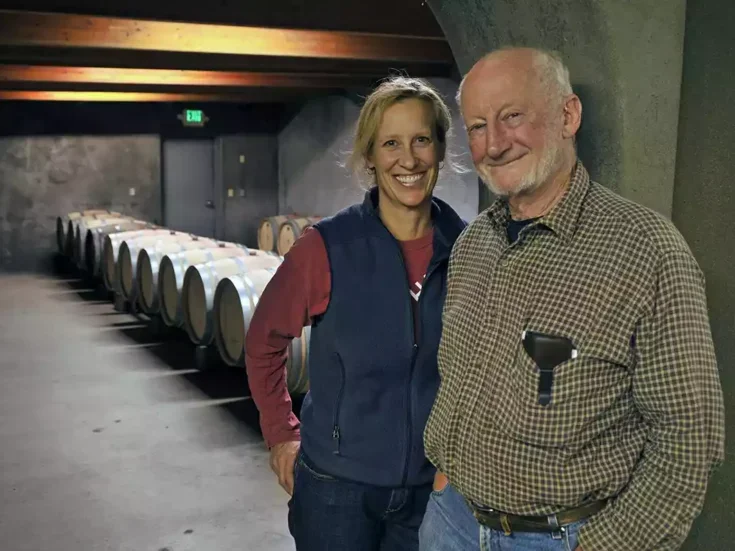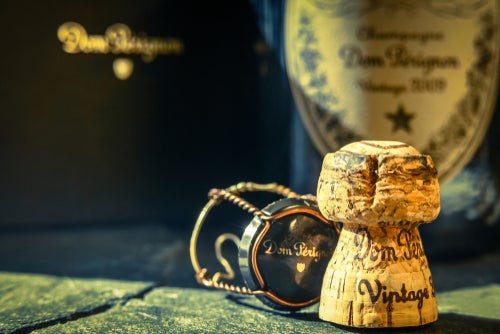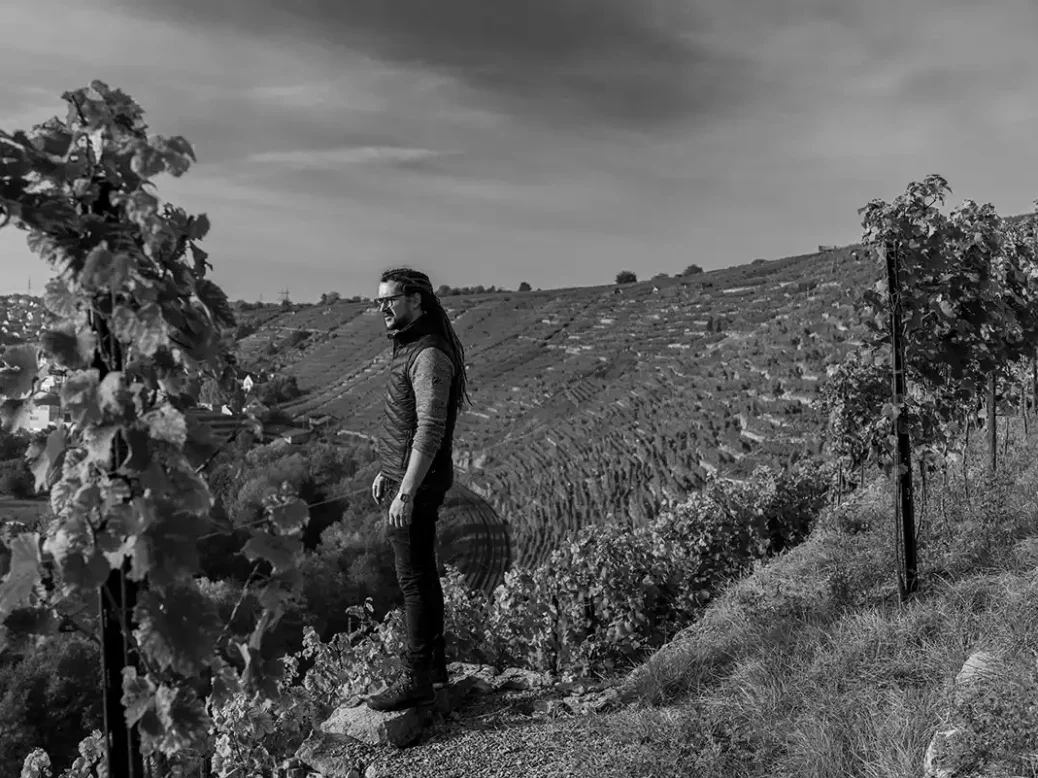
Dautel: A nearly unerring sense of taste and proportion
Dautel Chardonnays
For the moment we can ignore the question of what role German Chardonnay might play as a citizen of this overpopulated world. It also makes sense to have it as the consort to the Pinot Noirs because, Burgundy. Though I suggest looking at Chablis and not the Côte d‘Or as the template for these Chardonnays.
2022 Bönnigheim Chardonnay—glug-glug-glug!
The village-wine, screwcapped, 12.5% alc.
I confess it smells delicious. All the sweet-straw fragrance of “basic” Chard is amply displayed.
I further confess, as a glass of “basic” dry-white-wine for who knows what function or purpose, you could hardly do better. Even Pinot Blanc might be too assertive— and forget Riesling, which is much too distracting. This Chardonnay is happy, clean, and delicious. It doesn’t pretend to any great stoniness nor to any big leesy richness. It shows the virtues of essential simplicity, the kind that isn’t mundane, the kind that is interesting enough but just barely not too interesting.
It scratches the Muscat itch, but even that wine would be too adamant (albeit charmingly so in the best instances) whereas this is just the perfect companion-wine when you don’t want to think about it but also don’t want your intelligence insulted.
I appreciate it without reservation! In its way it is perfect.
2021 Niedernberg, Besigheim
Chardonnay on the side of the label—heavy bottle—no other designation and nothing on the website. What is this?
It is definitely “toasty-oaky.” Sweetly, attractively so, but one doesn’t trust these attractions. 12.5% alc is nice.
And the wine has a bunch of profound stony power on the palate, much to my happy surprise. But curiously, it’s a rare wine that the Jancis glass diminishes, rendering it 1-dimensionally oaky.
In a sense I’m the wrong guy to comment—let alone to “review”—as this is a genre I find tiresome. The best I can muster is “OK if you must have this kind of thing…” which isn’t fair and isn’t respectful, but it is faithful to the way I feel. On the other hand; a summer evening, a seafood paella, who knows…?
We drank this several times with all kinds of things (and went through 70% of the saffron we had in the pantry) and found it “useful,” having made the effort. Tasting it again, I kind of like it. What’s become of me?
2022 Niedernberg, Besigheim
As above; you have to go looking for “Chardonnay” on the label.
At this point I had interpolated tasting the range of Pinot Blanc, and so the Chardonnays appear vulgar in comparison. They refer less to white Burgundy than to California Chardonnay—with all that implies.
I acknowledge the Old World verticality of structure and I appreciate the wine’s precision. It’s always hard for a commentator to grant the devil his due, i.e, to give due recognition to a wine in a genre he despises. I also admit the pleasant wash of butterscotch saltiness when I retaste it many days later (when it has shed a lot of its overt wood).
I acknowledge the coriander “sweetness.” I’m glad of the (mere) 12.5% alc. It’s good the wine isn’t (even) gaudier. The shrimp-stock saltiness is pleasant. If one must drink such wines, this one avoids most of the egregious excesses of the type. But the type could depart the world and only philistines would miss it. Maybe, for all I know, it sells well for the grower—but it is perhaps unworthy of him.
2021 Sonnenberg Chardonnay Bönnigheim
This is also smoky-oaky but more lemony and generally higher toned. It also has more of (what we call) minerality, which helps “justify” the wood. What ultimately seems to justify the wood is some concatenation of lees, fruit ripeness, delicate oak, and seamlessness whereby everything is tasted and nothing dominates. That’s hard to do, and many white Burgundies fail at doing it—but they’ve had a lot of practice.
This works because of its iridescent green lift, that lemon-balm thing I alluded to above. The Niedernberg is by no means “vulgar,” but compared to the deftness of this wine, it could seem that way. (It’s the difference between wine-with-oak and oak-with-wine.) It’s plausible that ’21 wasn’t suited to this regime of winemaking, and I know of instances where it worked regardless, but let’s watch what happens when (tomorrow) I taste another vintage.
There’s a kind of incipient minerality swimming through the lemon-lift, and while I continue to be “interested” in what I’m tasting here, it’s not something I’d lunge to drink again. Yet I’d be glad to have had it once! I’m a fucking mess.
Opinions will differ as regards the two sites’ wines. My own opinion shifts rather pusillanimously from day to day, but overall there is a richness of “lift” here that adds a note absent from the more fetching Niederberg. It is vinosity rather than mere “flavor.”
2022 Sonnenberg Chardonnay Bönnigheim
A bit of naphthalene at first—surprisingly. But only at first.
There’s a stream of “white-wine-sauce” that subdues the oak here. It’s less mineral than the ’21; it smells like popcorn though not as enticing. (And I do mean popcorn, before you add the globs of butter every sane person puts on popcorn, it being the main reason to eat popcorn at all.)
It sounds so snooty to say I’d “allow” for this; I mean, who the fuck am I? But what I want to say is, there are valid reasons to enjoy this wine. And oh shit, that’s even worse. How to extricate myself from this miserable hole of snobbism!
Put it this way; if I were served the Niederberg I’d drink two sips and have water for the rest of the evening. If they served me this I’d have a glass, maybe a sip or two more, and think “Not my type but it might have been worse.”
Still and yet, with every recognition that tastes vary, etc., I just cannot drink the Weissburgunders (let alone the Rieslings!) and accept that these Chardonnays are taking up any damn space at all. I respect the attempt, and am aware my tastes are “obscure” but do we possibly need any more of this genre of white wine?
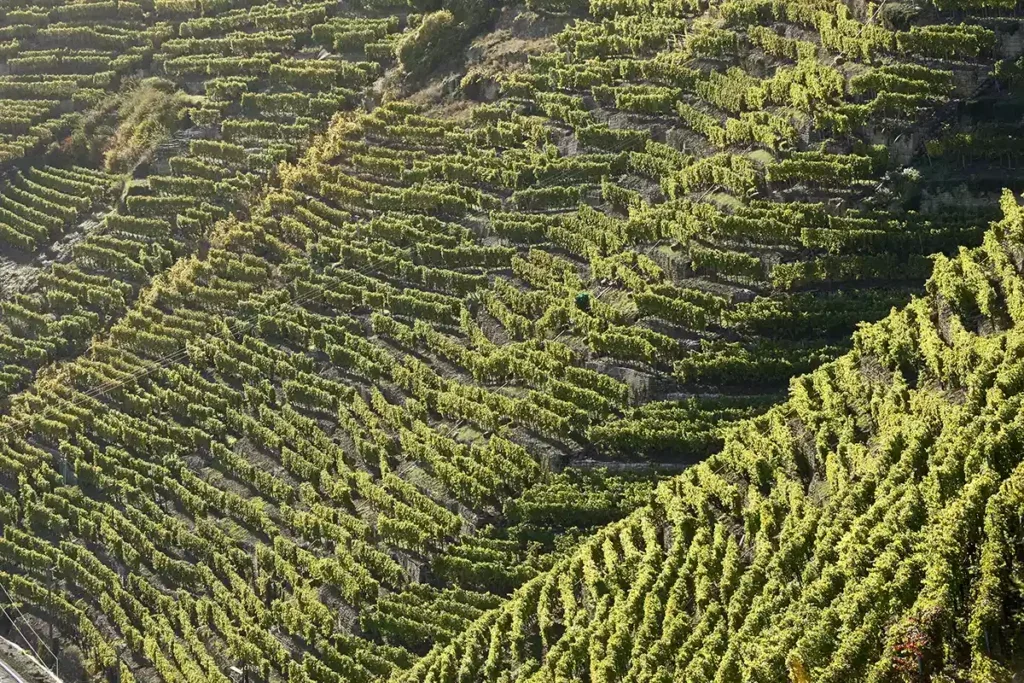
Dautel Weissburgunders
2023 (estate) Weissburgunder +
Screwcap, 12% alc.
By now I know this wine will break my heart—because I wasn’t prescient enough to obtain a solid case for my cellar. Basically I cannot tell you how everyday Pinot Blanc improves on this. I’d have “glug-glug-glugged” it but there’s too MUCH substance, and pardon the “sales” language, but if this isn’t your everyday dry white wine you probably have something either less good, more expensive or both.
Yes I know, there’s lots of yummy wine out there that satisfies the requirement—my friend Amanda brought me a crazy-good dry white from the Adriatic coast that almost made me whimper for her to sell me some—but I’m very sure you’ll find nothing better than this. But for what purpose, what criterion?
In a sense the wine can’t be too good. Put another way, it shouldn’t be so particularly good it draws too much attention to itself. In that sense, the absolutely great Dönnhoff estate Riesling (feinherb) will claim energy you were using to watch the ball game or tell jokes to your friends or talk about something other than wine. And the insanely useful Scheurebe feinherb from Theo Minges is most adapted to more “exotic” diets. What you need is a chameleon wine that works with anything, is incredibly tasty and is malleable but notneutral. Just like this beauty.
I don’t believe in “perfect” as a realization of an aesthetic Ideal that is changeable and nebulous—the whole “100 point” garbage—but to me this is perfect wine, because it drops me to my knees with gratefulness that I am alive to drink THIS. VERY. WINE, and I hope it never, ever ends.
2023 Bönnigheim Weissburgunder ++
The “village” wine grows on schilfsandstein, weathered limestone and gipskeuper.
As the vintages pass by—and do look back at earlier tasting reports for the basis of what I’m about to say—this wine seems more and more to occupy the status I personally regard as “great.”
And that is because it takes a grape variety most would call “neutral” or at best “agreeable but not especially interesting” and delivers it to a stratosphere of distinctiveness close to unique in the world.
Many of the more ambitious Pinot Blancs—and I’m thinking now of Georg Prieler’s, which I happen to know—succeed (when they do) by offering a lees and mineral mélange loosely approximating white Burgundy. And kudos to them. This wine, though, doesn’t remotely feint in any known direction. If it resembles anything it might be (the Loire’s) Romorantin, or even more radical, something other than wine. Even Jean Boxler’s great PB from the Grand Cru Brand is demonstrably laden with flavors from the cru. This, though, is barely terrestrial.
It was almost obdurately stunning every time I drank or tasted it. I can’t help myself; I love wines that ask what can this possibly be?
But for all I know there are fifty other Württemberg Pinot Blancs as fascinating as this one. Are there? Somebody write and tell me! For now I’ll just silently applaud a wine from an unexceptional variety that somehow tastes like it was made with Nepalese Timut pepper.
2021 Weissburgunder -S- +
The “reserve” quality wine (with just 12.5% alc in this cool vintage) goes back to a language we know.
That language is spoken in the Côte d’Or, and in this vintage, to a certain extent in Chablis. Yet it is seldom spoken as convincingly as here.
It is cooler than actual white Burgundy. Leesiness is more prominent, but cask is less prominent, which is a good thing. It’s like a St-Aubin 1er Cru punching above its weight.
As such it yields the originality of the previous wine, and instead it performs a convincing rendition of songs we’ve heard before. Nothing wrong with that! I’d rather drink this than the equivalent Burgundy, ie, what I could afford among those wines. Here we have the pike-perch (semolina) dumplings without the over-reduced shellfish sauce….(in its place is a lovely beurre blanc with chervil and just a hint of masa harina…).
I love drinking it. I think this is how to do “this type” of wine. I love its creamy mineral dance, I love its subtle toast, I totally love its moderate alcohol, and I totally respect that a wine like this couldn’t come from an unsteady hand. You see it from the empty glass, which doesn’t smell of wood but instead of basmati, which is how you know it was done properly. Its flavors refer more to Champagne than anything else, and among Christian Dautel’s many achievements, none is greater than this.
Dautel Pinot Noirs
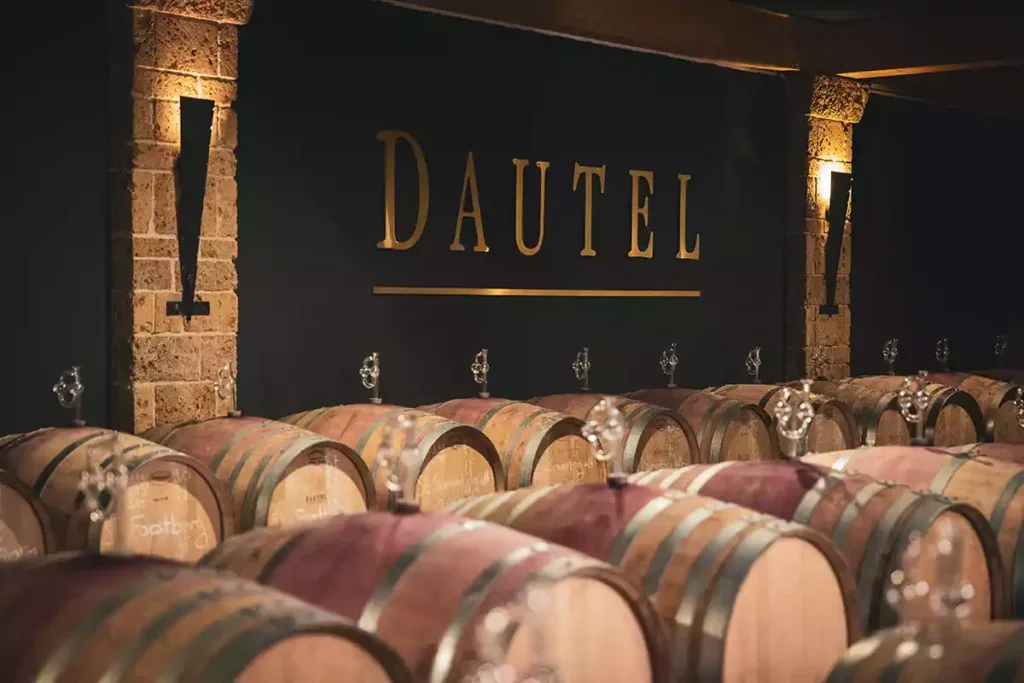
2022 Spätburgunder (estate)
Darker in color than either of the two village wines below, for some reason. And it has a ripe, forthright PN aroma; no edges or enigmas here.
In past vintages I sometimes found this wine a little on the coarse side, but this one is as it should be; generous, flavory, with the proper poise of earth and fruit. A resinous note is welcome and gives the wine more dialogue.
In this case a short note is a compliment. It could be even shorter—“Yup: this works.” Even a single word—“robust.”
But I appreciate its integration. Some German PNs still taste like composites of misaligned parts, or like they have flavors that were grafted on, with cask being the most prominent culprit. While this wine has a “modern” sort of sheen, it still tastes like it was born this way. It’s the best vintage since I’ve known these wines.
Decant it if you have some. Screw caps sometimes don’t cooperate, and the wine can show funky right out of the bottle.
2021 Cleebronn Spätburgunder
The “village” wine grows on “Schilfsandstein” (explained in previous posts), rocky sand and clay, on an elevated plateau where PN can ripen without acquiring excess alcohol.
I always appreciate the limpidity of Dautel’s PNs. In less ripe vintages, the variety can tilt toward the nightshades, tomato leaf and even artichoke. A characterful aroma that reminds me of Müller-Catoir’s superb “basic” PN.
The palate is angular and a bit aloof. The fruit doesn’t gush at you, but the herbal notes linger into a surprisingly echo-y finish. The Jancis glass reveals peppery and ferrous scents, and places a vivid minerality front and center. It’s unusual to describe a PN as “mineral” or “herbal” but we have a happily unusual beast in our glass(es).
A kind of “sweetness” begins to manifest but it’s less the usual PN fruit than the flavor of summer squash from the grill. This pensive, articulate PN will never get “high scores” because it isn’t hedonic, but we don’t award “points” for fascination, and we often don’t understand there are types of deliciousness and not all of them are ingratiating.
But watch how the flavors consolidate in the glass! In fifteen minutes you could well be talking about intensity—driven in this case by acidity and a kind of energetic snap. Those virtues ally to freshness, and I see no reason to wait around to see how this might “develop.”
2022 Cleebronn Spätburgunder +
As above, with 13% alc compared to 12.5 for the ’21.
A furtive reduction.
Things clarify; even in a vintage with “sweeter” fruit this wine is angular in its basic nature, and that angularity is most “attractive” in more clement years. There’s a lot of that here, but also a more delicate temperament than we found in hot years like ’18 and ’19. Tannin’s a bit chewy here, for example.
But overall the herbal/mineral profile of Cleebronn is set against a juicier texture than the ’21 shows. But this has to be provisional, until the reduction fades away, as it distorts the wine’s structure.
Over the minutes the wine becomes more sweetly spicy, and joins the PN flavors we “know” albeit in its idiosyncratic way. In fact it’s a wine of mind, and it lights up the part of your sensorium that responds as much to interesting flavors as to appealing ones. And like the ’21, it consolidates a certain intensity with air. Over many days, it retreats a little, which I think is encouraging.
Among Dautel’s many wines, there’s a family resemblance that some of them share. I’d put this with the Weissburgunder from Gipskeuper and also with the Riesling from that terroir. The trio is compellingly non-mainstream, and for all the heights reached by the various GGs—which are lofty and as stunning as they should be—it’s these little quirk-wines that steal my ol’ heart.
2021 Sonnenberg Spätburgunder Bönnigheim +
The premier cru, on Shilfsandstein and Gipskeuper on a limestone bedrock.
Take a look at the soil here.
For whatever reason, this has tended to be the broody one among the PNs. I thought it might be friskier in ’21, and it is. It shows the conifer edge I sometimes note in Chassagne rouge or Santenay.
First sip and all I could think was Well aren’t we wide awake! These flavors are jumping on a trampoline. That plus they’re kind of insanely mineral and herbal; marjoram and even verbena. And they are pupil-shrinkingly bright.
I’ve rarely seen a wine so taut and also so vinous. The flavors are constantly transforming and yielding to new flavors, but the finale is a skipping and seductive blend of grasses and minerals and umami sweetness. Even the faint animal notes are welcome.
Apropos of which, if you have some grass fed lamb and want to go retro and make a mint jelly, you have those flavors in this glass of wine. Sometimes those literal cognates don’t work but it would be super fun to try.
Finally it’s the sapid texture that makes this wine so compelling. Energy by itself can pall but allied to a texture as persuasive as this, the result is a wine you drink compulsively. It’s also a (rare) red wine that behaves like a white wine structurally, without being faint or feeble in its “red-ness.” How often have you thought “salty” when tasting vin rouge?
2020 Sonnenberg Spätburgunder, Bönnigheim +
This is the Sonnenberg I know, broody as an Emil Nolde canvas, charged with a vivid darkness, powerful and riddlesome.
It’s not that the wine is forbidding. It is occupied with its own thoughts—preoccupied, one could say. It doesn’t look up when you enter the room. Its posture conveys a certain grief, a certain bruised sweetness.
What it “tastes like” doesn’t matter very much. It is a good wine to drink. If you know Pinot Noir, nothing about it will shock you. Some tasters—inexperienced ones—will have recourse to the “It’s too young” commonplace, though this is accurate, if unhelpful.
The big chocolately character of 2020 PNs is a sort of lament, a threnody. You’re aware of the distance you have to surmount to access that embedded sweetness, and what it cost to preserve it. The wine is meditative, nocturnal. You wouldn’t drink it on a spring afternoon with the birds flitting about. Do that with the ’21! This wine is arterial, grave, gorgeously dark.
It happened I barely touched the bottle until now, five days hence, tasting it again. It’s more available and more visibly complex, yet we see not its smile, but its handsome, somber resting face.
I had a sense this would be incipient with these wines, but these two vintages have, each in its own way, made it explicit. The ’21 enacts a giddy vitality, while this one….I was going to write the word “funereal,” but that would be misleading. Think instead of a memorial service. Stories are told, anecdotes are shared, the departed is as much celebrated as mourned, and yet she is departed, and we are never far from tears. We are here for one another, while we are here, and on the other side is that uneasy darkness.
It’s a lot to lay on this wine—on any wine—but it happens some time. You encounter a wine that gives you thoughts of love and solace and loss and grief. Then, you return to your life.
2021 Schupen, Bönnigheim, GG ++
Saliently Gipskeuper.
I’ve found Schupen to be as articulate as Pinot Noir can ever be. You don’t have to strain to hear it. These wines speak in the clearest diction of which this variety is capable.
They also embody—to perfection—the “erogenous” grand cru principle. The instant you sniff them you’re aware of something para, something extra, imponderable, and you think “This thing is not like the other things.” (The beauty here isn’t plastered over with new wood.)
This wine is quietly stupendous and probably great. It is the opposite of the “tomato-mushroom-truffle-soy-spicebox” side of PN. It’s PN that returned from a cool party thrown by Riesling and wondered “Is that something we could do also?”
Walk away now—you are warned—because we leave sensuality with these images.
During the day you walk around and there’s a pile of twigs somewhere, and you pay them little mind because after all, they are just a pile of twigs, and twigs are an ordinary detritus that doesn’t concern you. You end your day and climb into bed and turn out your light. When the twigs are sure you have gone to sleep, they rustle and stir, and rearrange themselves into little circles, where they sit together and catch up and read the poems they wrote that day. No one but the twigs ever gets to hear those poems. Perhaps they are “small” poems—these being, after all, twigs—but it could also be that every poem deserves to live in the air for a while. In any case, the sleeper has no idea that below his window, the common little twigs are having their nightly twig-haiku slam. Every single night, until the snow blankets them. (Then the snow writes its own night-poems, but that’s another subject and we aren’t talking about those poems now.)
Schupen, which we are tasting, is many things, most of them not terribly useful to describe, but one thing that Schupen is, is the poems of the twigs.
One could get even more fanciful (“more???”) and write about the blood of the twigs or some such thing. It strikes me that a religion based on twigs could be a good religion, because one could worship lesser things than twigs. (That religion that worships dryer lint is truly screwed up.) But however you slice it, there is something hauntingly arcane about Schupen, and especially about this ’21 Schupen, that leads you all the way into the woods, looking at twigs perhaps for the very first time.
2020 Schupen, GG, Bönnigheim +++
Enough already with the twigs!
This ’20 smells like purple lilacs. Pinot Noir probably isn’t supposed to smell like lilacs, but sometimes there’s a flowery top note to its earthen umami.
I want to be the guy who likes the ’21 better, because having had unpopular taste for most of my life, I’ve started to be proud of it. It would be “just-like-me” to prefer the ’21. The proud contrarian!
Thing is I can’t. This ’20 is just overwhelmingly beautiful. Its cool “gray” angularity is set against a lavishness of chocolate and grill-marks and nightshades and basil and just, you know, fruit. Not to mention, can I ever recall a more deft and skillful gesture of cask than this wine shows?
In a perfect world, we ask these things from wine. We want a complex chord of flavor, in which each note melts in to the chord and makes it more interesting, and more beautiful. We want three (or more) acts, where there’s a beginning, middle and end, and where we can follow the arc and appreciate the structure of the narrative, ending up somewhere not where we started out. We want, obviously, attractive flavors, beautiful “language” if you will. We want both interesting nuance and also more nuance than we can quite apprehend, the sense that the wine is outrunning us. We want to be moved, stirred, stunned.
This doesn’t happen often, and it only happens with wines of a particular distinctiveness, such that drinker meets wine in a dialogue of citizens. If we are lucky, a dialogue of friends.
This is a fulfilling wine. If it leaves you less than fully satisfied, check that your demands for satisfaction are reasonable or attainable. This taster, at least, feels we are reaching a pinnacle here.
2021 Forstberg, GG, Oberstenfeld
A complex soil of marl over gipskeuper, sandstone and limestone.
In practice this is the softer of the two GGs. Because it is generally prettier, it might (at one time) have been described as “feminine.” It tends to show more “sweetly” if you appreciate that this has nothing to do with sugar.
I wondered how the ’21 could be. It starts with a reduction. This progresses to a broody, tomato-leaf note, that moves into porcini and artichoke. It’s a pull-you-in fragrance, not the dance-y springy energy of the Schupen.
I’ll describe the palate as “complicated” and ask you to keep reading, because complications aren’t always negative. That said, from the Jancis glass there’s a sense of watching the parts being assembled. There’s also some volatility in play. Either the wine is in an unruly puberty, or it is fundamentally awkward, and it’s too early to decide which thing it is.
It’s also possible there’s a disconnect between 2021 and Forstberg—but let’s see what the days will bring.
They bring a fetching sweetness to a wine that is basically maladroit, which makes for an “intriguing” experience. There’s also a rude tannin in play. It’s not that the wine is less than pleasant; it is simply a vintage misaligned with the Cru.
2020 Forstberg, GG, Oberstenfeld ++
This is closer to what I know Forstberg to be. It’s the Bonnes Mares of Dautel’s range, and maybe of Württemberg in general.
A sumptuous, seductive PN with much embedded nuance and complexity, a warm murmur, the yum-factor. Beneath this is an admirably firm structure and plenty of those resinous undertones we see (I think) in cool-ripened PN. (I’m no expert and could be way wrong about this.)
I’m reaching a point—you all know it—where everything is understood immediately and nothing needs to be said. In essence this is simply superb Pinot Noir, in the way that we “expect” PN to be, when it is superb. Once again, it isn’t spicy but it has the heated-tomato sweetness we know, and the embedded green flavors we talk less about. It has layers and depth.
It has, in short, almost every attribute we want from the “grand cru” category, except an insistent distinctiveness. We go to Schupen for that. This wine gives us the classic parameters of 1st-class PN, and it is a happy thing to drink it.
Stable over the days, its interior umami-sweetness only grew more exquisite. It’s a lovely northern European PN that has zero need to force the issue with blatant oak or crude overripeness. It is classical, almost sedate in its glowing beauty.


